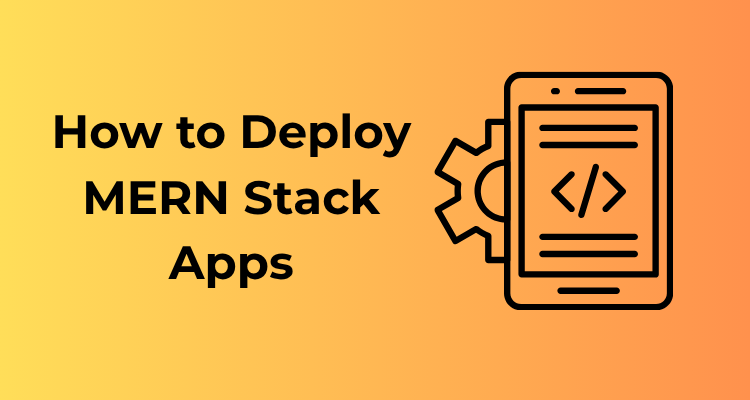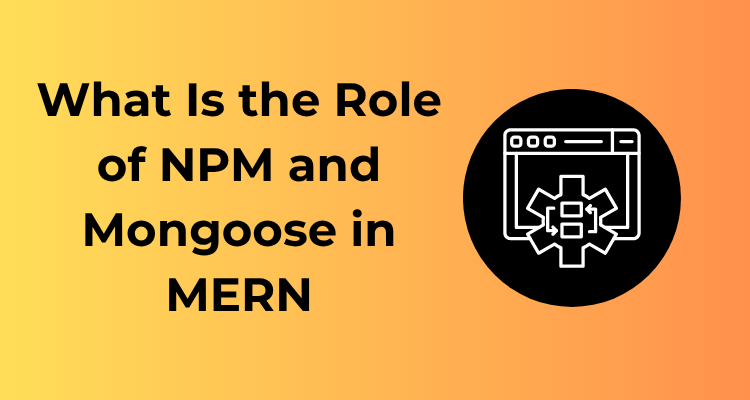Before diving into the exciting world of deploying your MERN stack (MongoDB, Express.js, React, Node.js) applications, it’s essential to grasp the basics of deployment. This foundational understanding sets you up for smooth, stress-free hosting on platforms like Vercel, Heroku, or GitHub. Think of it as checking your toolkit before starting an ambitious project; it saves you time, effort, and countless headaches later on.
Why is Deployment Important?
Let’s start off with the basics. Deployment is how you make your application available to users across the world. It’s the process of putting your project out of your local development environment (yes, your laptop’s localhost!) and making it live on the web. Think of it as converting your private passion project into a polished, shared experience for your audience.
But why does deployment matter so much? Because an app that isn’t deployed might as well not exist as far as end-users are concerned. Deployment bridges the gap between developers and users, making your projects accessible to people globally.
Key Terms You Should Know
If you’re new to deploying a MERN app, there are a handful of crucial terms you need to understand:
- Hosting Platform: The service where your app lives once deployed. Examples are Heroku, Vercel, and even GitHub Pages.
- Backend and Frontend: Simply put, the backend is the brain (server-side), and the frontend is the face (client-side). They’ll often be hosted together in a full-stack app but require separate handling during deployment.
- Build: A production-ready version of your app. It’s optimized for performance and can be served to users.
- Environment Variables: These are the secret keys or configuration settings your app uses (like database connections). Keeping these out of public view is critical for security!

The Deployment Paths
Now, let’s talk deployment pathways. There are several popular platforms available, and the “best” one depends on your app’s specifics:
- Vercel: Great for static sites and Next.js-based apps, but fully supports full-stack apps too.
- Heroku: Known for its simplicity and ability to handle backend logic, it’s widely loved for small-to-medium apps.
- GitHub Pages: Perfect for static frontends, allowing developers to showcase React-based interfaces to the world for free.
What You Need Before You Start
Preparation is everything. To kickstart your deployment journey, here’s what you need:
- A working MERN stack application.
- A basic understanding of Git. (You’ll need to push your code to places like GitHub.)
- Accounts on any platform you aim to use (e.g., Vercel or Heroku). Most of them offer free tiers!
- Confidence! Seriously, the process can initially feel overwhelming, but you’ll be surprised by how manageable it gets.
Preparing Your MERN Stack Application for Deployment
Deploying your MERN (MongoDB, Express.js, React, Node.js) stack application can feel a little intimidating at first. But, don’t worry! With the proper preparation, you’ll have your app ready to ship like a pro in no time. Think of this step as packing your bags before a big adventure—you want to make sure you’ve got everything you need for a smooth trip. Let’s break down what you need to do.
1. Clean Up Your Code
First and foremost, take a good look at your codebase. You want your MERN stack app to be clean, organized, and free from unnecessary files or console logs. Here’s what you can do:
- Remove unused dependencies: Check your
package.jsonfile and uninstall any packages you’re not using. - Minify assets: Utilize tools like
webpackoresbuildto compress your JavaScript and CSS files to improve loading performance. - Review environment variables: Use a
.envfile to store sensitive data like API keys or database URIs. Never hard-code these into your app.
2. Separate Client and Server
In a typical MERN stack app, you have two main parts—the client (React) and the server (Express and Node.js). When preparing the app for deployment, you can either deploy them together or separately. Many developers host them on the same domain for simplicity. Here’s what you need to double-check:
- Ensure proper routing: Use React’s
BrowserRouterand ensure your server handles fallback routes so your client-side app can function properly. - Build your React app: Run the
npm run buildcommand in the client directory. This generates a production-ready build of your application in abuildfolder.
3. Test Locally
Before deployment, give your application a thorough test locally. It’s important to make sure your app behaves as expected in a production-like environment. Here’s a checklist:
- Run your build files using a local server like
serveorhttp-server. - Ensure all APIs in the backend are responding correctly.
- Check that database connections to your local or cloud-based MongoDB instance are stable.
4. Choose a Database Hosting Option
If you’re using MongoDB, decide where your database will live in production. Options include:
- MongoDB Atlas: A cloud-based hosting option that’s super user-friendly for scaling.
- Self-hosted MongoDB: If you’ve set up your own server, ensure it’s secure and accessible wherever your app is hosted.
5. Prepare a Deployment-Specific Config
It’s important to differentiate between local development and the production environment. This often involves the following:
- Setting up distinct environment variables in your server’s
.envfile for production. - Configuring CORS (Cross-Origin Resource Sharing) for secure requests between your frontend and backend.
- Creating custom error handling middleware to ensure your app presents user-friendly errors in production.
6. Version Control and Final Check
Finally, commit your latest changes to a Git repository. Services like Vercel, Heroku, and GitHub rely on Git repositories to deploy your app. A quick checklist before committing:
- Make sure your
.gitignorefile includes node_modules,.env, and other unnecessary files. - Run tests to catch any last-minute bugs.
- Push your changes to your remote Git repository (e.g., GitHub, GitLab).
With all these steps completed, your MERN stack app is now fully prepared for deployment. You’ve done the heavy lifting and can now move on to the exciting part – making your app live for the world to see. Great job setting the foundation!

Vercel Made Simple: Deploying Your Full-Stack App
Got your MERN stack app ready to face the world? Awesome! Let’s talk about Vercel—a developer-friendly platform that makes deploying web applications feel like a walk in the park. Whether you’re new to Vercel or just looking to streamline your deployment process, I’ve got you covered. Sit tight and let’s make deploying your full-stack app a breeze!
Why Vercel?
Before jumping in, let’s talk about why Vercel is such a gem for developers:
- Simplicity: No complex configurations; just peace of mind.
- Automatic Builds: Every time you push code to your GitHub or GitLab repo, Vercel rebuilds and redeploys your app.
- Out-of-the-Box CDN: Speed is vital, and Vercel serves content globally to deliver lightning-fast experiences.
- Perfect for Full-Stack Devs: Front-end and back-end? No problem—Vercel’s got your back.
Convinced? Let’s dive into the steps!
Step-by-Step Guide: Deploying on Vercel
-
Create a Vercel Account
Head over to Vercel’s website, create an account (or log in if you already have one). The sign-up process is super straightforward—plus, it’s free for hobby projects!
-
Connect Your Git Repository
Vercel works beautifully with GitHub, GitLab, and Bitbucket repositories. Simply link your repository to Vercel:
- Click “New Project” once logged in.
- Select your repository (make sure it’s properly pushed with the most up-to-date code).
-
Configure Build Settings
For MERN stack apps, you’ll need to define your build settings in Vercel:
-
- Your front-end (React) should live in the
clientfolder. - Your back-end (Node.js/Express) should be in the
serverfolder. - In Vercel, configure your project to identify these folders:
- Your front-end (React) should live in the
root/ ├── client/ (React app) ├── server/ (Back-end API)
Normally, Vercel detects the details automatically, but double-check to avoid hiccups.
-
-
Set Environment Variables
If your app connects to a database or uses API keys (like MongoDB URIs), you’ll need to set up environment variables in Vercel:
-
- In the project settings, navigate to the Environment Variables section.
- Add your variables one by one. Example:
MONGODB_URI = your-mongodb-cluster-url PORT = 5000 JWT_SECRET = your-jwt-secret
- Keep these variables secure—no sharing!
-
-
Deploy!
Click the “Deploy” button and let Vercel work its magic! Within a few moments, you’ll receive a live URL where your app is hosted. Grab it and show the world what you’ve built.
Common Pitfalls (And How to Avoid Them!)
No deployment guide is complete without a heads-up on potential roadblocks. Here are a few things to watch out for:
- Ensure you’re using the correct file structure. Placing the
package.jsonproperly for bothclientandserverfolders is crucial. - Double-check your environment variables. Missing ones can break your API!
- Test your app locally before deploying to catch any errors ahead of time.
Deploying to Heroku: The Right Steps for Seamless Hosting
Heroku is a fantastic platform for deploying and hosting MERN stack applications. It’s especially great because it streamlines app deployment, scaling, and management. Let’s dive into the **right steps to deploy your MERN stack app to Heroku** so it’s smooth sailing!
Step 1: Prepare Your Application
Before any deployment process, preparation is key! Ensure that your MERN app is ready for production:
- Environment variables: Use a library like
dotenvto handle your environment variables securely and set up a.envfile for sensitive data like API keys and database URLs. Remember, DO NOT commit this file to your GitHub repo! - Package your app: Update your app’s
package.jsonfile. For example, in the “scripts” section, ensure you have a start command, like"start": "node server.js", so Heroku knows how to run your app.
Step 2: Install the Heroku CLI
If you haven’t already, download the Heroku CLI. This tool allows you to interact with Heroku directly from your terminal. You can download it for Windows, macOS, or Linux.
Once installed, log in by running:
heroku loginStep 3: Connect Your App to Git
Heroku requires Git to deploy. If your app isn’t already under version control, initialize it by running:
git initThen, stage and commit your changes:
git add .
git commit -m "Prepare app for Heroku deployment"If you’re using a GitHub repository, make sure to push your code there for safekeeping before moving forward.
Step 4: Create and Configure Your Heroku App
Now it’s time to create your app on Heroku with:
heroku create YOUR_APP_NAME(Replace YOUR_APP_NAME with your desired app name.) Heroku will set up a remote repository for your app.
Next, configure your environment variables in Heroku. Go to your app’s dashboard, click on Settings, and then click Reveal Config Vars. Add all the required keys (e.g., DATABASE_URL for MongoDB).
Step 5: Deploy Your Code
It’s deployment time! Push your code to Heroku with:
git push heroku mainWhen the deployment is successful, you’ll see a URL in your terminal where your app is live. 🎉
Step 6: Setting Up MongoDB
If you’re using MongoDB, you’ll need to connect it to your Heroku app. Many developers use MongoDB Atlas. Simply copy your Atlas connection string, tweak it with your username/password, and set it as DATABASE_URL in Heroku’s Config Vars.
Step 7: Monitor and Troubleshoot
Finally, keep an eye on your app! Use the Heroku logs feature to monitor its performance or debug issues. Access the logs by running:
heroku logs --tailPro Tips for Success
- Always test your app locally using production settings before deploying.
- Leverage Heroku’s free dyno hours wisely for small-scale projects.
- If your app becomes popular (yay!), consider upgrading to ensure scalability.
GitHub Pages Deployment: Making the Front-End Accessible
Ah, GitHub Pages! A fantastic, free option for deploying the front-end of your application. If you’re looking to host just the user interface of your MERN stack app or any static site, GitHub Pages is your best friend. Let’s break this down step-by-step so you can get your front-end live in no time while having some fun through the process.
Why GitHub Pages?
- It’s completely free – great for developers on a budget.
- Setup is easy once you understand the basics.
- Your app becomes accessible with a sleek custom GitHub Pages URL (e.g.,
https://yourusername.github.io/). - No need for heavy backend configuration—perfect for front-end deployments.
Sounds good, right? Let’s dive in!
Step 1: Prepare Your Project
Before uploading anything to GitHub Pages, be sure your front-end app is ready. If you’re working with React (a popular choice for MERN stack front-ends), run the following command to create a production build:
npm run buildThis will minimize and optimize your files, creating a neat build folder. This is what you’ll deploy through GitHub Pages.
Step 2: Add GitHub Pages to Your Workflow
- Push Your Code to GitHub: Make sure your project is in a GitHub repository.
- Install GitHub Pages Dependency: For React apps, add the GitHub Pages package with:
npm install gh-pages --save-dev - Modify
package.json: Add the following under thescriptssection:"homepage": "https://yourusername.github.io/repository-name", "scripts": { "predeploy": "npm run build", "deploy": "gh-pages -d build" }Replace
yourusernameandrepository-nameaccordingly. Thepredeployscript ensures the app builds before deployment.
Step 3: Deploy Your Front-End
You’re almost there! Run the following command to deploy your front-end build to GitHub Pages:
npm run deployAfter this, your app will be live! Check it out at the homepage link you set up earlier. If you’ve done everything properly, expect to see your interface shining on the web.
Step 4: Handle Common Snags
Encountering an issue? Here are some common gotchas:
- 404 errors: Make sure you linked the correct repository and branch in your homepage URL.
- Unresponsive deployment: Confirm that files from the
buildfolder are being served—it handles static content but doesn’t support server-side routes. - Uncommitted changes: Push any local additions or fixes to your main GitHub branch.
Debugging and Troubleshooting Deployment Errors
Deploying a MERN stack application can feel like an exciting adventure—until deployment errors rear their ugly heads. Don’t worry though! Debugging and troubleshooting are an integral part of the process. It’s like solving a puzzle: with the right pieces (or steps), you’ll master it in no time. Here’s everything you need to know to chase away those pesky errors and make your deployment seamless.
1. Stay Calm. Check Logs First!
The first rule of debugging? Stay calm! Deployment errors happen even to seasoned developers. Your best friend here is the logs. Whether you’re using Vercel, Heroku, or another platform, there’s often a built-in logging tool. These logs usually include detailed error messages that can pin down what went wrong—like a missing environment variable or port mismatch.
Pro Tip: For Heroku, run heroku logs --tail in your CLI to monitor the errors live. For Vercel, navigate to the “Deployments” tab and check build or runtime logs. You’ll often find the solution staring back at you in black and white!
2. It’s (Probably) an Environment Variable Issue
Environment variables are a common culprit in deployment errors. Forgetting to set your DB_URI, JWT_SECRET, or any other critical variable in your platform’s settings will almost always stop your app from running.
Double-check the following:
- Did you add all environment variables in your hosting platform (Heroku or Vercel)?
- Are the variable names correctly spelled (beware of typos)?
- Is your
.envfile missing on production? (Hosting platforms don’t use local.envfiles, so manually add variables in the dashboard!)
3. Diagnose Build Failures
If your app fails to build during deployment, inspect the issue closely. Build issues often arise from:
- Unresolved file paths: These can break in production if your system is case-sensitive (e.g.,
import App.jsinstead ofimport app.js). - Mismatched Node.js versions: Make sure your app is using the same Node version as the one specified in your hosting platform. Add a
"engines"field in yourpackage.jsonto enforce consistency. - Incorrect
startscript: Ensure your package.json has a script like:"start": "node server.js"or"serve build"for front-end-only apps.
4. Fixing CORS Issues
Cross-Origin Resource Sharing (CORS) policies can block your front-end from calling your back-end. If you’re getting CORS errors, here’s how to fix it:
-
- In your Express app, install the
corspackage and enable it:
- In your Express app, install the
const cors = require('cors');
app.use(cors());- Specify allowed origins to add security:
{ origin: 'https://your-frontend-url.com' }
5. Frontend Not Connecting? Check API URL
If your deployed front-end isn’t working as expected, ensure it’s pointing to the correct back-end URL. This often requires updating your API URL from localhost to your production server domain.
Example: Replace http://localhost:5000 in your front-end code with https://your-backend.herokuapp.com or whatever URL your hosting service provides after deployment.
6. Never Forget to Test in Production Mode
Your app might work perfectly on localhost, but production mode has its quirks. Always simulate production behavior locally. Use tools like Postman to test APIs or npm run build to preview your front-end before deploying.
Deployment Tips to Optimize Performance and Costs
So, you’ve successfully deployed your awesome MERN stack app, and everything seems to be running smoothly. Excellent work! But wait — are you sure you’re getting the best performance and cost efficiency out of your deployment? Let’s dive into some savvy tips that’ll help you level up your deployment game. Trust me, these little gems can make all the difference between a good deployment and a great one.
1. Optimize Your Front-End for Faster Load Times
The front-end of your MERN app is what users interact with, so the quicker it loads, the better their experience. Here’s a checklist to get you started:
- Minify Your Code: Use tools like Webpack or Vite to minify JavaScript, CSS, and HTML files. Smaller files load faster!
- Image Optimization: Compress images using tools like Squoosh or serve WebP formats to reduce file sizes without sacrificing quality.
- Lazy Loading: Implement lazy loading for images and other heavy assets, so they’re only loaded when they’re about to be displayed on the user’s screen.
2. Leverage CDN for Static Assets
Static assets like images, fonts, and style files, when served from a Content Delivery Network (CDN), can significantly improve your app’s performance. CDNs store copies of your files on servers worldwide, reducing the time it takes to deliver them to users no matter where they are. Some amazing CDN options include:
3. Monitor and Scale Your Back-End
MERN stack apps rely heavily on back-end performance, especially when dealing with user authentication, database queries, and API requests. Keep your costs in check while maintaining performance with these tips:
- Use Efficient Database Queries: Avoid fetching unnecessary data by implementing precise filters. Use proper indexing in MongoDB collections to quicken query execution.
- Implement Serverless Functions: On platforms like Vercel and AWS Lambda, serverless functions only use resources when needed, saving you money while improving scalability.
- Monitor Resource Usage: Always monitor your app’s CPU, memory, and database usage to prevent over-provisioning. Tools like New Relic or Datadog can help with this.
4. Reduce Unnecessary App Builds
If you’re constantly iterating on your project, it can feel like every tweak is followed by an endless chain of builds and redeployments. To save time and resources, consider these strategies:
- Selective Deployment: Deploy only the parts of your app that have changed, rather than rebuilding the entire project.
- Caching Dependencies: Use caching mechanisms in CI/CD pipelines to avoid re-installing libraries like
node_modulesunless necessary.
5. Set Up Downtime Alerts and Monitoring
No one likes surprise outages. Set up alerts to notify you of downtime or spikes in resource usage. Tools like Uptime Robot and StatusPage can help keep you informed and proactive.
6. Choose the Right Hosting Tier
Whether you’re using Vercel, Heroku, or another hosting provider, ensure you’re on the right plan for your app’s current needs. If you’re working with a small team or don’t expect heavy traffic, a free tier might be sufficient. As your user base grows, transition to a paid plan to accommodate traffic without overspending upfront.
And that’s it! These tips will help you optimize your deployment for both performance and cost. The key here is balance — you want to provide a smooth experience for your users while staying budget-conscious. Happy deploying, and may your app soar to new heights!








